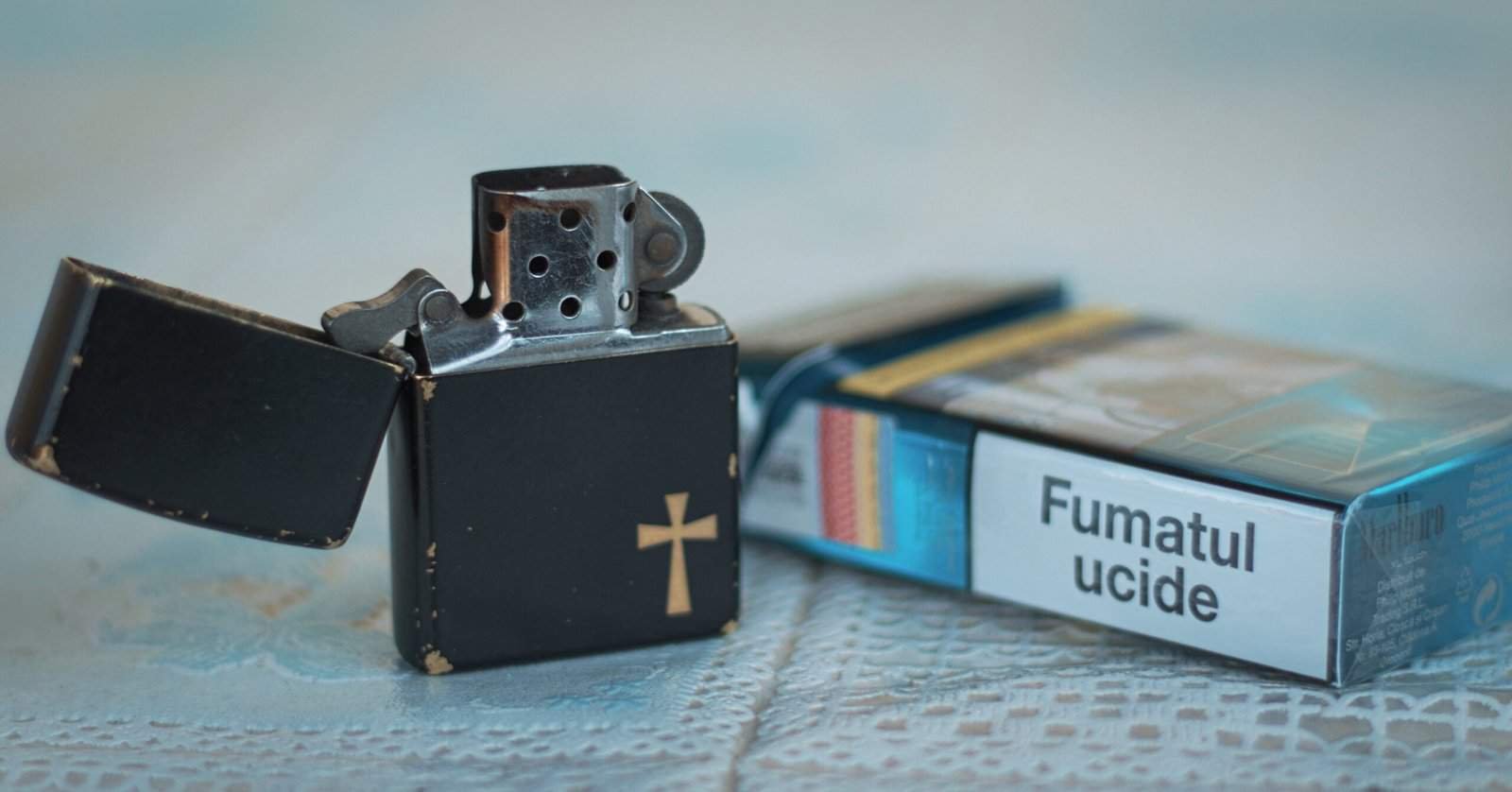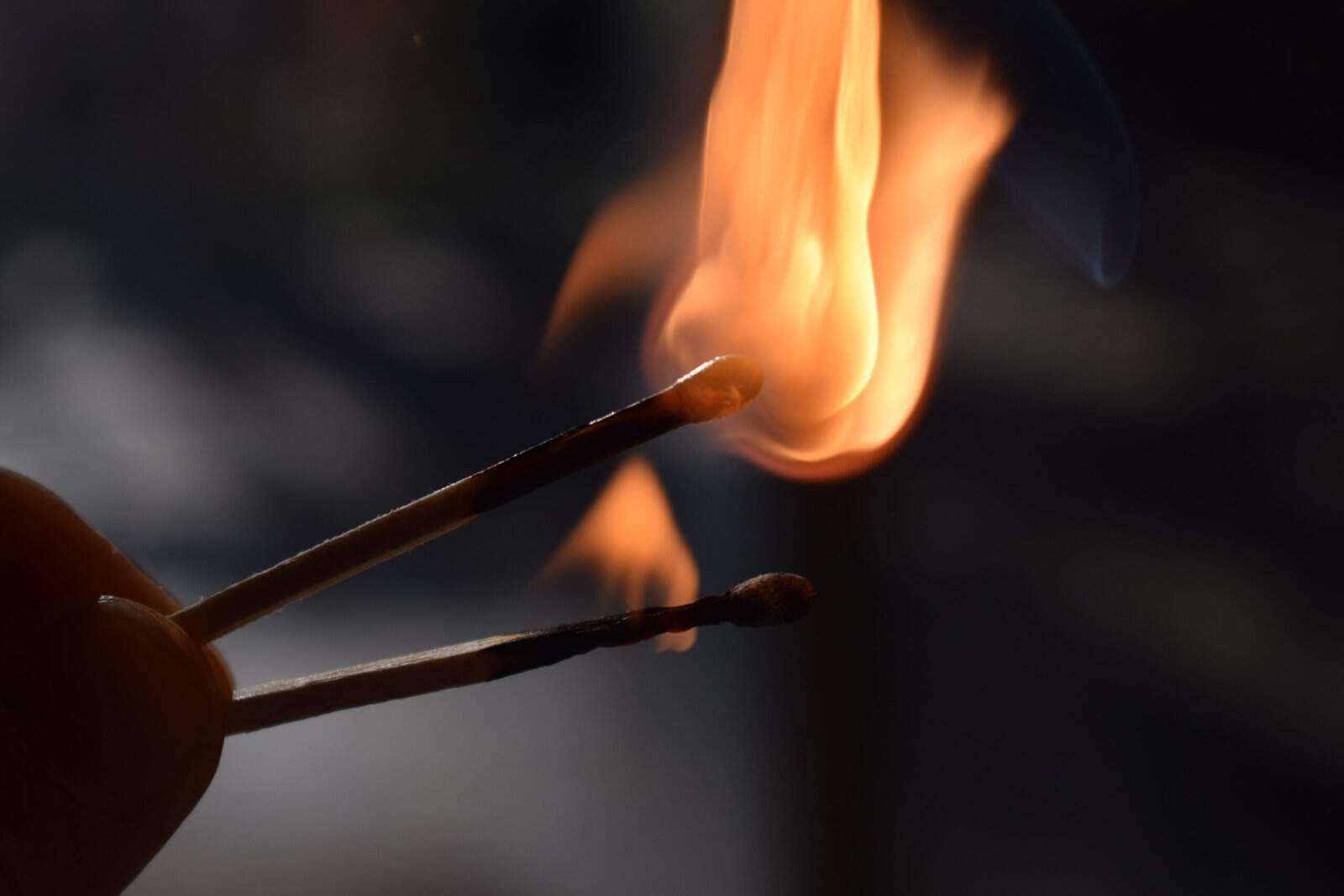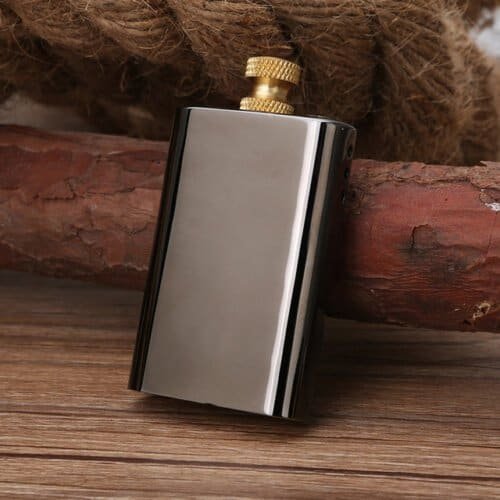The humble lighter, a ubiquitous tool found in pockets, purses, and drawers around the world, serves as a testament to human ingenuity in harnessing fire. Despite its common presence, one question frequently arises, sparking curiosity and practical concern alike: How long does a lighter last? This seemingly simple inquiry opens the door to a complex exploration of variables including the lighter’s design, the frequency of use, and the conditions under which it operates. In this essay, we delve into the lifespan of various types of lighters, from the disposable to the refillable, and everything in between, shedding light on the factors that determine their longevity. By understanding the mechanics behind these portable flames, we uncover not only the technical aspects of their operation but also the broader implications of their use in daily life and survival situations.

What is a Lighter?
A lighter is a portable device designed to produce a flame, serving the fundamental purpose of igniting a variety of combustible materials, such as cigarettes, candles, campfires, and gas stoves. Rooted in the basic human need to control fire, the evolution of the lighter has paralleled advancements in technology and materials science, resulting in a wide array of designs and functionalities suited to diverse needs and preferences.
Types of Lighters
- Disposable Lighters: These are inexpensive, widely available, and intended for short-term use. Once the fuel runs out, they are discarded.
- Refillable Lighters: Designed for longevity, these lighters can be refilled with fuel, making them a more sustainable and cost-effective option over time. They often feature robust construction and customizable designs.
- Electric or Plasma Lighters: Utilizing electricity to generate a plasma arc or hot coil, these lighters are flameless, windproof, and rechargeable, representing the cutting edge of lighter technology.
Mechanisms of Action
- Flint and Steel: Traditional lighters create a spark by rubbing a metal wheel against a flint, igniting the fuel released from a wick or valve.
- Piezoelectric: Some modern lighters employ a piezoelectric crystal that generates a spark when compressed, igniting the gas without the need for flint and steel.
- Electric Heating Element: Electric lighters heat a coil or create a plasma arc through electrical energy stored in batteries, igniting materials without direct flame or fuel.
Materials and Design
- Materials: Lighters are constructed from a variety of materials, including metals for durability and plastics for cost efficiency. The choice of material affects the lighter’s weight, feel, and longevity.
- Design and Features: From sleek, minimalist designs to ornate, collectible editions, lighters cater to aesthetic preferences as well as functional requirements, with features like wind resistance, waterproofing, and safety locks.
The lighter, in its many forms, represents a remarkable convergence of utility and design. Whether serving as a simple tool for daily tasks, a durable companion for outdoor adventures, or a cherished item for collectors, the lighter’s role extends beyond its basic function, touching on aspects of culture, technology, and environmental consciousness.
How Long Does A Lighter Last?
The longevity of a lighter is influenced by a myriad of factors, ranging from its design and type to usage patterns and maintenance. This vital question, “How Long Does A Lighter Last?” is not met with a one-size-fits-all answer but rather depends on several key aspects that determine its lifespan. Here, we delve into the nuances of lighter durability, providing insights into what users might expect from their lighters over time.
Types and Lifespan
- Disposable Lighters: Typically, a standard disposable lighter can last for approximately 1,000 to 3,000 lights, depending on the brand and model. Their lifespan is inherently limited by the non-rechargeable nature of their fuel source.
- Refillable Lighters: The lifespan of refillable lighters can significantly exceed that of disposables, with the potential for years of service. The actual duration depends on the quality of the lighter, frequency of use, and how well it is maintained. The ability to refill these lighters with fuel extends their usefulness indefinitely, though parts like flints and wicks may need occasional replacement.
- Electric or Plasma Lighters: Electric lighters offer a different metric of longevity, measured in charge cycles rather than flame ignitions. A single charge can provide anywhere from 100 to 300 uses, with the battery’s overall lifespan ranging from several hundred to a few thousand recharge cycles.
Factors Affecting Lifespan
- Frequency of Use: Naturally, the more frequently a lighter is used, the quicker it will deplete its fuel source or battery life, necessitating refueling or recharging.
- Maintenance: Regular cleaning and proper maintenance, such as replacing worn parts in refillable lighters or ensuring electric lighters are kept dry and clean, can significantly extend a lighter’s lifespan.
- Storage Conditions: Lighters stored in extreme temperatures or exposed to the elements may experience a reduction in performance and lifespan. Proper storage is key to preserving a lighter’s functionality.
- Quality of Fuel: For refillable lighters, the quality of the fuel used can impact performance and longevity. High-quality, manufacturer-recommended fuels can ensure optimal efficiency and reduce wear on components.
Understanding how long a lighter lasts involves considering these variables alongside the inherent design and build quality of the lighter itself. While disposable lighters offer convenience, their finite life makes them a less sustainable choice. In contrast, refillable and electric lighters, with proper care, present a durable and potentially eco-friendlier alternative, embodying both the advances in lighter technology and a move towards more sustainable consumption practices.
Optimizing the Lifespan of Your Lighter
Given the factors that influence the durability and operational life of a lighter, there are proactive steps users can take to optimize their lighter’s lifespan, irrespective of the type. Implementing these practices not only ensures the longevity of the device but also promotes safety and reliability in its use.
For Disposable Lighters:
- Minimize Continuous Burn: Avoid keeping the lighter lit for extended periods, as this can rapidly deplete the fuel and overheat the lighter, potentially damaging its components.
- Proper Disposal: Once a disposable lighter has reached the end of its fuel supply, ensure it is disposed of properly, according to local regulations, to minimize environmental impact.
For Refillable Lighters:
- Regular Refilling: Refill the lighter with high-quality fuel before it runs completely dry to maintain optimal performance and prevent air from entering the fuel chamber, which can affect flame quality.
- Component Replacement: Replace components like flints, wicks, and worn seals as needed. This maintenance keeps the lighter functioning efficiently and can significantly extend its overall life.
- Clean Regularly: Wipe down the exterior and clear the burner area of debris to ensure smooth operation. For lighters with accessible internal components, periodic cleaning can prevent buildup that might impede function.
For Electric or Plasma Lighters:
- Charge Appropriately: Follow the manufacturer’s instructions for charging to avoid overcharging, which can shorten the battery’s lifespan. Use the recommended charger and cable to ensure compatibility.
- Avoid Moisture: Keep electric lighters dry, as moisture can damage electronic components. If a lighter does become wet, allow it to dry completely before attempting to charge or use it.
- Protect the Elements: The heating element or plasma arc is the most crucial part of an electric lighter. Avoid touching or poking it with foreign objects, which can lead to damage and reduce the effectiveness of the lighter.

Factors That Impact Longevity
The longevity of a lighter is not solely determined by its build quality or type; various external and user-related factors significantly impact its lifespan. Understanding these factors can help users optimize their lighter’s performance and extend its operational life. This section delves into the key elements that influence the durability and functionality of lighters across all types.
Usage Frequency
- High vs. Low Usage: Frequent usage naturally leads to quicker depletion of the fuel or battery life in lighters. Lighters used daily or multiple times a day will have a shorter lifespan compared to those used less frequently.
Environmental Exposure
- Temperature and Humidity: Extreme temperatures and high humidity can affect a lighter’s functionality. Cold conditions may cause butane lighters to light less reliably, while high humidity can impact electric lighter components and fuel efficiency in traditional lighters.
- Altitude: The performance of butane lighters is also affected by altitude. At higher elevations, the reduced air pressure can make it more difficult for the fuel to vaporize and ignite.
Maintenance and Care
- Cleaning Practices: Proper cleaning of the lighter’s exterior and, where possible, the interior mechanisms can prevent buildup that might obstruct the fuel flow or electrical contacts, ensuring consistent performance.
- Timely Refueling and Recharging: Allowing a lighter to run completely dry or an electric lighter’s battery to fully deplete can sometimes reduce their efficiency over time. Regular refueling and timely recharging according to manufacturer guidelines help maintain longevity.
Storage Conditions
- Proper Storage: Storing lighters in a cool, dry place away from direct sunlight and heat sources can prevent damage and preserve the integrity of the fuel or battery. Improper storage can lead to issues like leakage, corrosion, or battery degradation.
Quality of Consumables
- Fuel and Charging Sources: Using high-quality butane for refillable lighters and ensuring electric lighters are charged with compatible cables and adapters can significantly impact their effective lifespan. Poor quality fuel or improper charging can damage the lighter’s mechanisms or battery.
User Handling
- Physical Damage: Dropping a lighter or subjecting it to rough handling can cause physical damage that impacts its functionality, from cracked cases to misaligned components that affect the ignition process.
By being mindful of these factors, users can take proactive steps to mitigate potential issues that could shorten the life of their lighter. Whether it’s through regular maintenance, cautious handling, or thoughtful storage, the goal is to preserve the lighter’s condition, ensuring that it remains a reliable tool for ignition in various situations. Ultimately, the longevity of a lighter is as much about how it’s cared for as it is about its inherent design and quality.
Maintenance Tips To Extend Your Lighter’s Life
Ensuring the longevity of your lighter, regardless of its type, involves a series of maintenance steps tailored to preserving its functionality and reliability. The following maintenance tips are designed to extend the life of your lighter, enabling it to serve you efficiently for as long as possible.
Regular Cleaning
- Exterior Wiping: Use a soft cloth to regularly wipe the exterior of your lighter to remove dirt, grime, and any substances that could potentially clog or damage its components.
- Interior Maintenance: For refillable lighters, occasionally clean the wick area and the flint wheel using a small brush or compressed air to clear away any debris that could impede ignition.
Proper Refueling and Recharging
- Use High-Quality Fuel: Always use the manufacturer-recommended butane for refillable lighters. Inferior quality fuel can contain impurities that clog the lighter’s fuel delivery system.
- Follow Charging Instructions: For electric lighters, adhere to the manufacturer’s charging guidelines. Avoid overcharging, and use the correct charger to prevent battery damage.
Storage Practices
- Cool, Dry Place: Store your lighter in a location away from direct sunlight, high temperatures, and humidity to prevent fuel evaporation or component degradation.
- Separate from Other Items: To avoid physical damage, store your lighter in a dedicated space where it won’t be crushed or scratched by other items.
Avoid Misuse
- Respect Usage Limits: Do not keep the lighter ignited for longer than the recommended duration, as excessive heat can damage the lighter’s mechanisms or deplete electric lighters’ batteries rapidly.
- Proper Handling: Handle the lighter gently to avoid dropping it or subjecting it to forces that could misalign its components or crack its casing.
Periodic Component Checks and Replacements
- Flint and Wick Inspection: For flint-based lighters, check the flint and wick regularly for wear and replace them as needed to ensure consistent performance.
- Battery Health: For electric lighters, monitor the battery health and performance, looking out for signs of diminished capacity which might indicate it’s time for a replacement if possible.
Avoid Environmental Stressors
- Protect from Elements: When using your lighter outdoors, protect it from rain, snow, and extreme cold, which could affect its performance or cause damage over time.
By implementing these maintenance tips, users can significantly extend the lifespan and enhance the reliability of their lighters. Regular care not only prevents common issues but also ensures that your lighter is always ready when you need it, whether for everyday tasks or emergency situations. Proper maintenance is a small investment of time and effort that pays off by prolonging the useful life of this essential tool.
Optimize Fuel and Energy Use
- Fuel Efficiency: For refillable butane lighters, fill the lighter slowly to ensure it is properly saturated with fuel, avoiding overfilling which can lead to leakage and potential hazard. Let the lighter rest after refilling before igniting it to allow any excess gas to evaporate.
- Energy Conservation: For electric lighters, conserve battery life by turning off or locking the lighter when not in use to prevent accidental ignition or power drain.
Seasonal Adjustments
- Winter Care: In colder climates or seasons, keep your lighter in an interior pocket close to your body when outdoors. Body warmth can help maintain the fluidity of butane and battery efficiency in electric models.
- Summer Precautions: During hot seasons, avoid leaving lighters in direct sunlight or inside a hot vehicle to prevent the risk of expansion and leakage of butane lighters and to protect the battery life of electric models.
Handling and Transportation
- Secure Transport: When traveling, especially by air, follow transportation regulations regarding lighters. Ensure that refillable lighters are emptied of fuel and that electric lighters are adequately protected against accidental activation.
- Protective Casings: Consider using a protective case or pouch for your lighter, especially if carrying it alongside keys, tools, or other potentially abrasive items that could cause physical damage.
Regular Functionality Checks
- Ignition Testing: Periodically test the ignition system of your lighter to ensure it is working correctly. For flint lighters, make sure the spark is consistent and strong. For electric lighters, check that the arc or heating element activates as expected.
- Air Purging: For butane lighters, occasionally purge any trapped air from the fuel tank before refilling. This can be done by depressing the refill valve with a small tool until no hissing sound is heard, ensuring more efficient fuel use and consistent flame production.
Awareness of End-of-Life Signs
- Recognize Wear and Tear: Be vigilant for signs that your lighter is reaching the end of its usable life, such as consistent difficulties in ignition, significantly reduced flame size or battery life, or physical damage that could affect safety.
- Replacement Considerations: Once a lighter shows consistent signs of wear or malfunction despite proper maintenance, consider replacing it to ensure reliability and safety in its use.

FAQ
Q1: How often should I refill my butane lighter?
A: Refill your butane lighter whenever it runs low on fuel, typically after a few weeks or months of regular use. Signs of needing a refill include a weaker flame or difficulty lighting.
Q2: Can electric lighters be overcharged?
A: Yes, overcharging an electric lighter can reduce the battery’s lifespan. It’s best to charge according to the manufacturer’s instructions and disconnect the lighter once fully charged.
Q3: Are there any safety concerns with carrying a lighter daily?
A: While carrying a lighter daily is generally safe, avoid exposing it to extreme heat or direct sunlight, and keep it away from water to prevent damage or safety hazards.
Q4: Do disposable lighters last as long as refillable ones?
A: Disposable lighters have a finite lifespan and typically last until the fuel runs out, which can be anywhere from 1,000 to 3,000 lights. Refillable lighters, with proper maintenance, can last for many years.
Q5: How can I extend the life of my lighter’s flame?
A: For adjustable flame lighters, keeping the flame setting on low when not needing a high flame can conserve fuel, extending the lighter’s life between refills.
Conclusion
The question of “How Long Does a Lighter Last?” encompasses more than just a simple timeframe; it invites an understanding of the types of lighters available, their maintenance, and the factors influencing their longevity. From disposable to electric models, each type of lighter offers different advantages and lifespans, influenced by usage patterns, care, and environmental conditions. Proper maintenance, from regular cleaning to correct refueling and charging practices, can significantly extend the life of a lighter, making it a reliable tool for everyday use and emergencies alike. Ultimately, the longevity of a lighter is a testament to the user’s knowledge and attentiveness to its care, ensuring that this small but mighty tool remains functional and ready at a moment’s notice.

